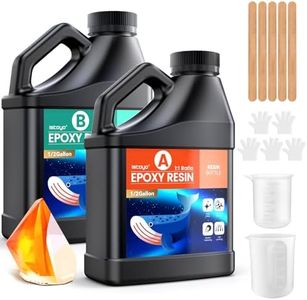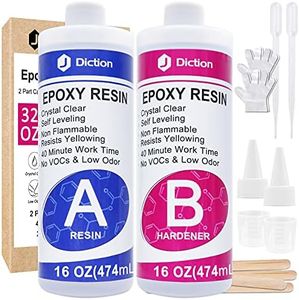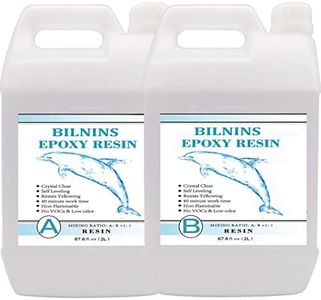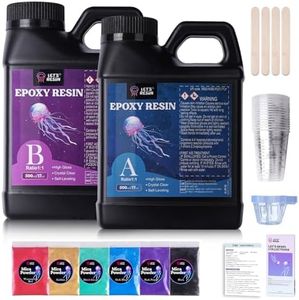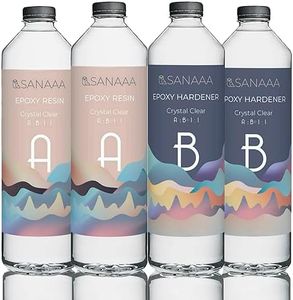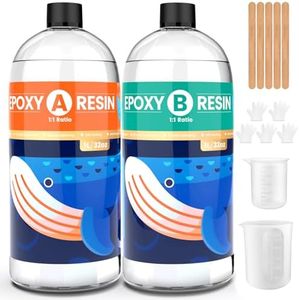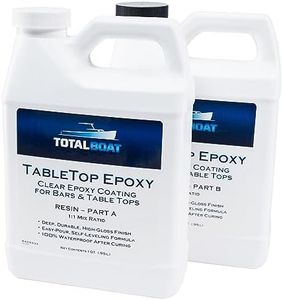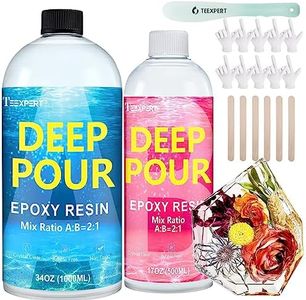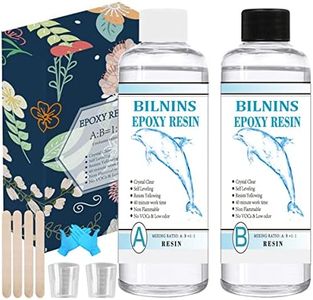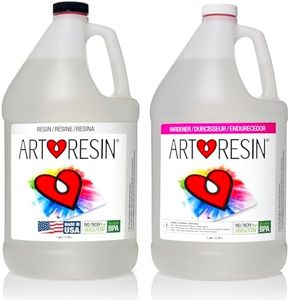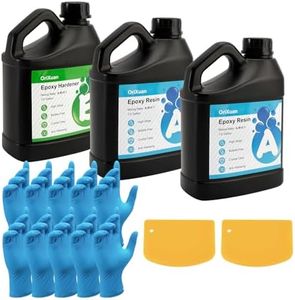We Use CookiesWe use cookies to enhance the security, performance,
functionality and for analytical and promotional activities. By continuing to browse this site you
are agreeing to our privacy policy
10 Best Wood Epoxy Resin
From leading brands and best sellers available on the web.Recommended lists
Buying Guide for the Best Wood Epoxy Resin
Choosing the right wood-epoxy resin can make or break your woodworking or crafting project. The ideal resin should suit your intended function, whether it's for river tables, coating, casting, or filling. When picking a resin, it’s important to consider factors like clarity, working time, thickness (pour depth), hardness, and resistance to environmental factors like UV light or heat. Knowing what you want to achieve will help you filter through the options and make the process much smoother.ClarityClarity refers to how transparent or clear the cured resin appears. This is important if you want a glass-like finish or if you’re making artistic pieces where appearance matters. Some resins dry almost crystal clear, while others may have a slight tint. If you’re embedding objects or want a window-like look, choose a very clear epoxy. For decorative uses where clarity is less important or you plan to add color, you can be less strict about this spec.
Curing Time (Working Time)Curing time describes how long the resin takes to fully harden, while working time is the period you have to pour and shape it before it begins to set. For complex or large projects, a longer working time allows more flexibility to work at your pace, blend colors, or remove bubbles. Fast-curing resins are good for smaller, simple projects where speed is an advantage. Pick a resin with a working time that matches the size and detail of your project.
Pour DepthPour depth is the maximum thickness you can pour in one layer without quality problems like overheating or incomplete curing. Deep-pour resins let you make thick layers (like river tables), while shallow-pour resins are best for coatings or thin fills. If you’re planning a deep cast, look for resins rated for at least 2-5 cm per pour. For coatings or smaller fills, thinner pour resins are fine. Match the pour depth to your project’s needs for the best results.
HardnessHardness tells you how tough or resistant to scratches and dents the finished resin will be. Projects like table tops or floors require high hardness to withstand regular use, while jewelry or art pieces may get by with less. Most resins are rated by the Shore D scale, with higher numbers meaning harder finishes. Decide based on how much wear and tear your finished piece will face.
UV ResistanceUV resistance shows how well the resin can handle sunlight without turning yellow or degrading. It's very important for pieces exposed to natural light, like outdoor furniture or sunny indoor spots. If your project will be in direct sunlight, prioritize epoxy resins advertised as UV-resistant or with anti-yellowing properties. For pieces kept in the shade, this spec is less critical.
ViscosityViscosity means how thick or runny the uncured resin is. High-viscosity (thick) resins are better for coating surfaces or filling shallow spaces without running off, while low-viscosity (runny) resins are great for pouring into molds or hard-to-reach gaps because they flow more easily. Choose based on whether you need the resin to spread out or stay in place.
